- Home
- Keith Douglass
Flame Out c-4 Page 2
Flame Out c-4 Read online
Page 2
“Yes!” Tombstone whooped. He could feel the plane’s weight increasing as fuel flowed into the tanks. The Tomcat started to drop back, but Magruder increased the throttle to hold his precarious position. There was no way of knowing if the avgas would continue to pump if he let the plane slip back to the normal position, and he wasn’t about to try this maneuver again.
“Mercury Leader, Darkstar. Are you getting anything? Over.”
“Affirmative, Darkstar,” Tombstone replied. He looked down at the fuel gauge in time to see it rising above the two-hundred-pound mark. It had been a damned close call.
He concentrated on holding the Tomcat steady as the fuel continued to pump into his tanks, easing back after the gauge reported a thousand pounds to a less dangerous distance. The avgas kept flowing steadily, nearly five hundred pounds entering the Tomcat’s tanks every minute. Tombstone held the aircraft in position until he had 3500 pounds aboard, then called the tanker again. “Darkstar, Mercury Leader disengaging. And we thank you for your support.”
The tanker pilot gave a chuckle on the other end of the line. “Glad to help out. Sorry for the trouble.” There was a long pause. “Oh, yeah, almost forgot. Just before we launched, the boys in Viper Squadron told me to give you a message, Tombstone. Welcome home!”
2257 hours Zulu (457 hours Zone)
Air Ops, U.S.S. Thomas Jefferson
The North Atlantic
A man-made island far from the nearest dry ground, the U.S.S. Thomas Jefferson, CVN-74, plowed through the cold, dark waters of the North Atlantic, her course north-northeast at a speed of thirty knots. America’s newest nuclear-powered supercarrier, like the other vessels of the Nimitz class, was one of the most powerful ships of war ever to sail the world ocean. She measured over a thousand feet in length, with a flight deck that covered four and a half acres and ample space to house the 5,500 officers and enlisted men who called her home. As the core of Carrier Battle Group 14, comprising seven warships and an Air Wing of over ninety aircraft, Jefferson formed the heart of a naval fighting force of incredible power and versatility.
But sitting near the back of the glassed-in Air Operations room, commonly known as Primary Flight Control, or “Pri-Fly” in carrier slang, Captain Joseph Stramaglia couldn’t help but ponder the limitations of that power.
He had decided to monitor flight operations this evening from Pri-Fly, and had arrived about the time that the ferry mission from Oceana NAS had met up with Darkstar, the KA-6D tanker dispatched from Jefferson to top off tanks that would be running low after a flight of over nineteen hundred miles. That was about the range limit for an F-14, and Mercury Flight was still a hundred and fifty miles away from the safe haven of the carrier. Stramaglia had listened as the refueling problem had developed, feeling as helpless as the rest of the men in Air Ops. For blue-water operations like this there was little margin for error.
When the radio channel finally carried Commander Magruder’s triumphant whoop, a cheer had gone up in Pri-Fly. Stramaglia had taken a long sip from his coffee mug to hide the smile on his face. He was a firm believer in maintaining appearances, and it wouldn’t have done to allow the other men in the crowded little control center to see just how relieved he was at Mercury Leader’s successful refueling.
Jefferson’s Air Boss, Commander Jack Monroe, didn’t bother to hide his feelings. “Hot damn, Stoney Magruder’s back!” he said. “That’s better’n the time he set down with half his turkey shot away and his RIO bleeding all over the backseat!”
Monroe, Stramaglia knew, had been Assistant Air Boss on Jefferson’s last overseas deployment. He was one of the veterans of the carrier’s engagements in North Korea and the Indian Ocean, and it was obvious that he shared in the ship-wide adulation for Commander Magruder, who’d become famous for his part in those operations.
Stramaglia huffed into his coffee. He had known Magruder before the youngster had scored his first kill … and the enthusiasm of men like Monroe never failed to irritate him. Not that he had anything against Magruder. He just didn’t think there was a place for what amounted to outright hero worship aboard the U.S.S. Thomas Jefferson.
“CAG?” A young third class looked up from a console nearby. “Tango Two-fiver reports they’ve picked up that Bear. It’s still closing on us. Range is five-fifty, speed five hundred knots. Same course and bearing as before.”
Stramaglia nodded and put down the coffee cup. “Commander Monroe, if the celebrations are over I think we’d better get the Alert planes off. Now, if you please.”
Monroe’s grin faded as the Air Boss turned his attention back to the routine of the flight deck. “You heard the man,” Monroe said harshly. “Let’s get with it, people!”
Stramaglia turned away, ignoring the rising hubbub of voices as Monroe’s white-shirted crew began relaying reports and instructions to and from the flight deck. He knew he was fast earning a reputation for being a tough, heartless bastard, but that was a role he was prepared to fall into if it would guarantee that Air Wing 20 stayed alert and ready for anything. They’d made it through the refueling crisis without having to sacrifice one of Mercury Flight’s planes, but there was more than one problem to keep Jefferson’s crew busy tonight. Like the Soviet Tu-20 Bear bomber they’d been tracking for the last several hours.
It was Monroe’s job as Air Boss to direct operations on and around Jefferson’s flight deck, but Stramaglia had wider duties. His title was CAG — it derived from the obsolete designation of Commander Air Group — and he was the commanding officer of Carrier Air Wing 20, the assortment of ninety-plus aircraft that gave the carrier her teeth. Everything that happened in the air for hundreds of miles around Carrier Battle Group 14 was his responsibility, from refueling problems to Soviet planes to whatever else the fates chose to throw in their path.
And with tensions between the United States and the new Soviet Union higher now than they’d ever been in the bad old days of the Cold War, Joseph Stramaglia was taking his responsibility seriously. That was why he was in Pri-Fly tonight, senior rank and position not withstanding. When his boys were in the air, he didn’t sleep or catch up on paperwork. If he wasn’t up there with them, then he was somewhere like Air Ops where he would be on hand to lend his experience and skill to helping them out if they got in trouble.
Despite the outward show of temper, Stramaglia was proud to be a part of this crew, this boat. As the carrier that had seen more combat service than any ship since the heady days of Desert Storm, Jefferson had a reputation to live up to. “Big J,” they called her.
This cruise, though, was shaping up to be a lot less glamorous, and a lot more dangerous, than her famous tour in the Pacific two years back. Stramaglia had already heard a couple of sailors referring to the carrier as “Big Jinx” after the storm that had wrecked four planes and killed five men, including Stramaglia’s Deputy CAG. The trouble Magruder had run into while refueling had seemed to confirm the new epithet. And there was still this Bear to deal with …
Stramaglia picked up his coffee mug again, but didn’t drink. He stared down into the dark brew as if trying to fathom the future in the tiny ripples there.
CHAPTER 2
Monday, 9 June, 1997
2300 hours Zulu (2100 hours Zone)
Tomcat 204, flight deck U.S.S. Thomas Jefferson
The North Atlantic
“Launch the Alert aircraft! Launch the Alert aircraft!” The launch order rang out from the ship’s 1-MC loudspeakers.
“We’re on!” Lieutenant Commander Edward Everett Wayne, running name “Batman,” set his magazine aside and checked the lacing on his boots carefully before standing up.
Lieutenant Terry Powers was already on his feet, zipping up his heavy flight-survival vest and reaching for his helmet in eager anticipation. “Finally some action!” he said, sounding excited and impatient. Batman thought he detected an underlying current of nervousness as well. Powers hadn’t been on carrier duty long, and there was a big difference between training f
lights with a RAG back in the States and genuine blue-water ops off a carrier deck.
“Whoa there, kid,” he warned. “Throttle back and level off.”
Powers looked at him uncertainly. “Sir?”
“Alert Fifteen means we launch fast,” Wayne continued. “But it doesn’t mean we launch dumb. Don’t be in such a hurry you forget about safety precautions, kid, or you’ll cut off a promising career before you’re properly started.” He pointed at the lieutenant’s feet. “Lace up those boots tighter. If you have to eject, you don’t want them catching on something in the cockpit on the way out.”
“Aye, aye, sir,” Powers said, looking sheepish. He crouched to do as he had been told. “I guess I’m just excited, sir.”
“Two things, Tyrone,” Batman said. “First off, lay off the ‘sirs’ for a while. Makes you sound like a midshipman who can’t find his way home. When there’s nobody here but us aviators I’m Batman. Got it?”
“Yes, sir … uh, Batman.”
“Secondly, chill out a little, kid. Take a leaf from Malibu here.” He pointed to his Radar Intercept Officer, Lieutenant Commander Kenneth Blake, whose running name of Malibu had been bestowed because of his blond good looks and carefully cultivated California-surfer persona. “He’s so cool we use him to keep the beer cold.”
Malibu flashed a careless grin. “Maybe so, dude,” he said with a deceptively laid-back drawl. “But that just means I always have a supply close by.” Despite the banter and the casual tone, Blake was ready to go, helmet under one arm, flight suit zipped up tight.
The fourth man in the ready room of the VF-95 Viper Squadron looked irritated. “Come on, let’s get moving.” Lieutenant William “Ears” Cavanaugh, who was assigned to fly the RIO position with Powers tonight, could never be described as a patient man. Every word, every motion, was quick and decisive, and the man had trouble dealing with anyone who wasn’t in tune with his particular rhythm of life.
The four men left the ready room, not running but moving briskly through the door and toward the flight deck. They emerged on a steel catwalk on the starboard side of the carrier, hanging right out over the angry black sea below.
Batman followed the others up the ladder that led up to the wide expanse of the ship’s “roof,” the flight deck, thankful for the moonlight that glinted off metal and made it unnecessary to unclip the flashlight hanging from his belt.
As he reached the flight deck he heard Powers enthusing. “Tonight’s the night for some action, Ears. We’re gonna go out there and get us some Bear!”
He could hear the eagerness in the young voice, and remembered the first time he’d been on one of the flights the Navy called a “Bear hunt.” That had been almost three years back now, during the crisis in North Korea. He could still remember his own enthusiasm that day … and the chewing out his squadron commander had given him after he had pulled a foolish stunt that had almost resulted in a collision between his Tomcat and the Russian bomber they were investigating.
“Hold on, there, nugget,” Batman said. “This isn’t a game, Tyrone. You fly this by the book, got it?” He heard Malibu snort, a comment on Batman telling anyone to fly by the book, but ignored it.
But Powers was suitably deflated. “Aye, aye, sir,” he said. “By the book.”
I’m starting to sound like old Tombstone, Batman thought with a grin. He could still remember Matt Magruder’s harsh words after that Bear hunt over the Sea of Japan. I don’t have room on this team for a goddamned hotdog! the squadron leader had said, We’re already in the middle of one crisis. The last thing we need now is dragging the Russians into it!
It had been a rough beginning, but he and Magruder had come out of the mess in North Korea as friends. Now Batman was Executive Officer of VF-95, a graduate of the Navy’s famous Top Gun school, and for all of his showmanship he had learned the value of caution and teamwork. If he really was starting to sound like Tombstone, he thought, then he really had made something of himself as an aviator after all.
Caution and teamwork … that would have to be the watchword tonight. Bear flights over the Atlantic were nothing new. They’d been a familiar routine all through the Cold War and well after the day the Berlin Wall came down. There had been times in the past when American pilots would swap signals with the Russian Bear crews, even talk on the radio. Some old-timers told about incidents where one side or the other would obligingly move their aircraft around so their opponents could take home photographs for their intelligence people.
This time, though, things were liable to be different. For the past five days Soviet troops had been engaged in hostilities against Norway, a one-time NATO ally and still a good friend of the United States.
That first time over the Sea of Japan Batman hadn’t really given much thought to the crisis brewing in North Korea or how the Russians might react to it. Like a lot of people he’d gotten out of the habit of thinking of them as the enemy. After those exciting days near the end of 1989 when the Cold War had suddenly come to an end, decades of fear and hate had turned overnight into new feelings of optimism and friendship. Soviet-American cooperation had made the victory in Operation Desert Storm possible, and the failure of the hard-line coup in August 1991 had seemed to mark the end of Communism and the beginning of a brand-new era of world history. Even after the Communists staged a successful military takeover the following year, after harsh winter weather and widespread famine had totally discredited the reform movement, it had seemed that the Soviet Union would never again be able to occupy center stage in world affairs. Communist or not, the new rulers had seemed willing enough to get along with the West. Just a few months after his first Bear hunt Batman had found himself flying alongside Soviet naval aviators of the aircraft carrier Kreml during the UN intervention in the war between India and Pakistan.
America had been too wrapped up in domestic affairs to stop the Soviets when they renounced the agreements recognizing the independence of their breakaway republics, and just as slow to react to the invasion of Norway, but now tensions were running high. And Batman now understood the lesson Tombstone Magruder had taught him back on that first cruise. The crisis in Norway had brought Russia and America to the brink of war. Batman Wayne didn’t plan to be the man who pushed them over the edge.
He shoved those thoughts to the back of his mind as they reached their planes and started on the serious business of checking the Tomcat over before they entrusted their lives to it. Chief Bergstrom, the brown-shirted plane captain responsible for maintaining and inspecting the aircraft, joined Batman and Malibu as they circled the big interceptor. Bergstrom was a good man, and Batman trusted him, but not to the point of going up without making sure there wasn’t some careless mistake by one of the maintenance crewmen just waiting to be overlooked.
Satisfied, they moved to the left side of the Tomcat. Bergstrom folded down the cockpit ladder. “Good hunting, sir!” he shouted over the din of the flight deck.
Batman gave him a quick thumbs-up and climbed into the front of the cockpit. Malibu settled into the backseat a few moments later, while Wayne was still settling his kneeboard into place on his leg.
He went carefully through the pre-flight checklist, suppressing a grin at the thought of how conscientious he’d become in the last three years. It all went back to the tour with Tombstone Magruder, who’d taught him that it didn’t always take glitz and glitter to make a first-rate fighter pilot.
The checklist finished, Batman powered up the Tomcat’s two General Electric F110-GE-400 engines, first the right, then the left. He nodded in satisfaction at their sound and adjusted the throttle by his left hand to idle. Tradition maintained that as squadron Exec he should fly Tomcat 202, but it had been one of the victims the day the A-6E had crashed on the flight deck. Number 204, this bird, didn’t have his name or Malibu’s stenciled below the canopy, but aviators traded off aircraft assignments often enough. This Tomcat seemed to be in top shape.
Outside deck crewmen were unhooking park
ing chains and clearing away the chocks around the wheels. A deck crewman whose yellow flashlights identified him as a plane handler signaled Batman with quick gestures of the wands, and Wayne followed his instructions and taxied the aircraft toward catapult number one. A constellation of other colored lights closed in around the Tomcat. Blue wands were crewmen checking the control surfaces of the Tomcat, while ordnance specialists with red wands prepped the air-to-air missiles, radar-guided Sparrows and heat-seeking Sidewinders hanging suspended from their launch rails. Four times a low hum sounded in Batman’s headphones as the ordies passed their flashlights close to the noses of each Sidewinder. The heat-sensing guidance systems were sensitive enough to detect even a flashlight as a heat source and alert the pilot that they were locked on a potential target.
A deck crewman appeared to the left of the Tomcat holding up a lighted board showing the number 65,000, the takeoff weight of Tomcat 204. It was vital that the steam catapult be properly set for the weight of the plane to ensure a safe launch. Behind Batman, Malibu waved a flashlight in a circular motion to acknowledge the 65,000-pound figure.
Underneath the plane a hookup man connected the launching bar on the F-14’s nose gear to the cat shuttle. Once it was hooked up, Batman knew, another crewman would check the holdback bar that would keep the Tomcat from breaking free until the moment of the launch, and the jet-blast deflector would rise into position behind the plane. The dance on the deck was a complex ritual, graceful and intricate, with every move designed to send the plane on its way safely and quickly.
The catapult officer, identified by his green and red flashlights, waved the green light horizontally. Batman obeyed the signal and moved the twin throttles to full military power. He could feel the fighter straining against the holdback bolt, like a wild animal eager to return to its own native element. Batman went through the time-honored ritual to test the control stick between his knees, left, right, forward, back. Then he checked the rudder pedals. All working. All ready.

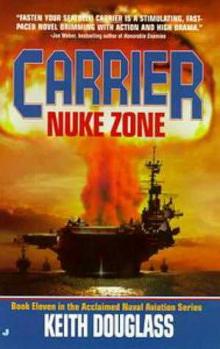 Nuke Zone c-11
Nuke Zone c-11 Seal Team Seven 6 - Battleground
Seal Team Seven 6 - Battleground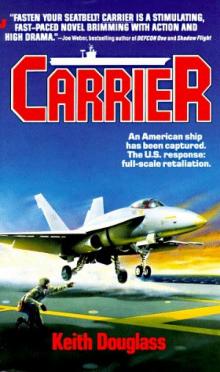 Carrier c-1
Carrier c-1 Island Warriors c-18
Island Warriors c-18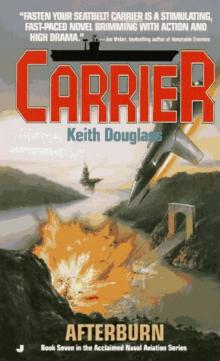 Afterburn c-7
Afterburn c-7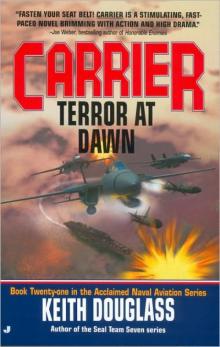 Terror At Dawn c-21
Terror At Dawn c-21 Specter sts-2
Specter sts-2 Joint Operations c-16
Joint Operations c-16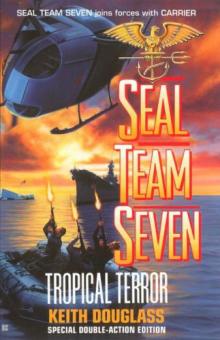 Tropical Terror sts-12
Tropical Terror sts-12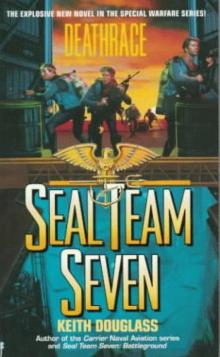 Seal Team Seven 7 - Deathrace
Seal Team Seven 7 - Deathrace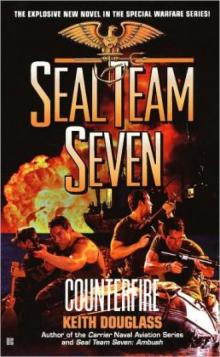 Counterfire sts-16
Counterfire sts-16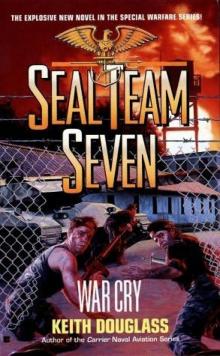 War Cry sts-9
War Cry sts-9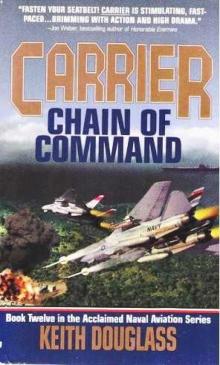 Chain of Command c-12
Chain of Command c-12 Brink of War c-13
Brink of War c-13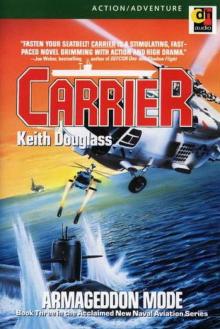 Armageddon Mode c-3
Armageddon Mode c-3 Arsenal c-10
Arsenal c-10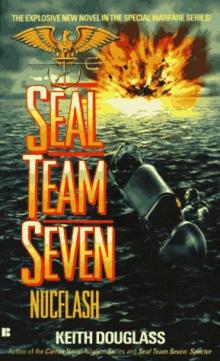 Nucflash sts-3
Nucflash sts-3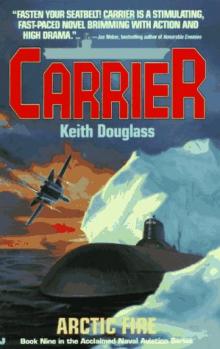 Arctic Fire c-9
Arctic Fire c-9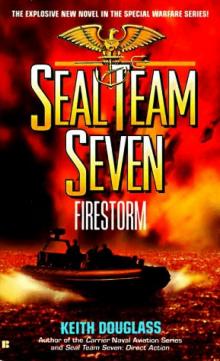 Firestorm sts-5
Firestorm sts-5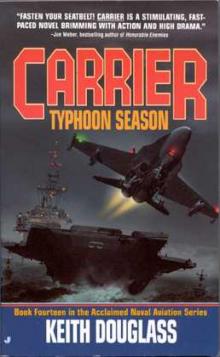 Typhoon Season c-14
Typhoon Season c-14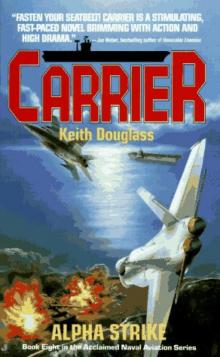 Alpha Strike c-8
Alpha Strike c-8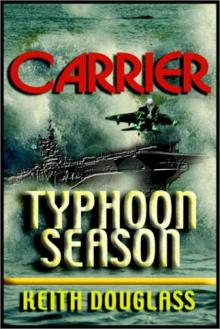 Carrier 14 - TYPHOON SEASON
Carrier 14 - TYPHOON SEASON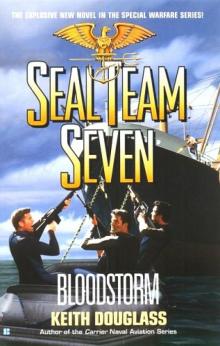 Bloodstorm sts-13
Bloodstorm sts-13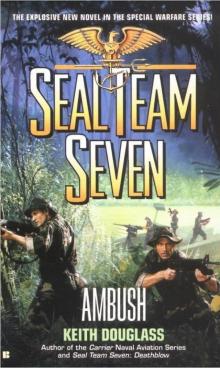 Ambush sts-15
Ambush sts-15 First Strike c-19
First Strike c-19 Flame Out c-4
Flame Out c-4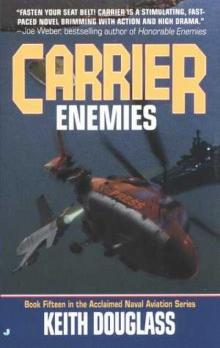 Enemies c-15
Enemies c-15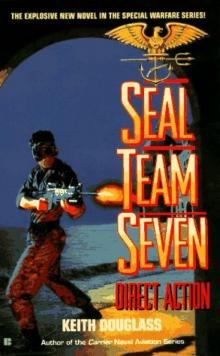 Seal Team Seven 04 - Direct Action
Seal Team Seven 04 - Direct Action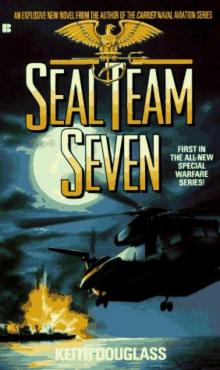 Seal Team Seven 01 - Seal Team Seven
Seal Team Seven 01 - Seal Team Seven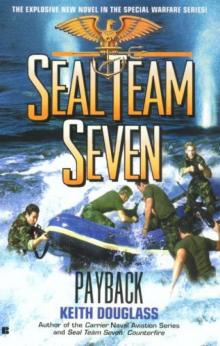 Payback sts-17
Payback sts-17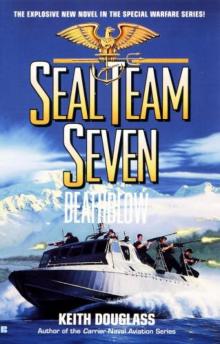 Death Blow sts-14
Death Blow sts-14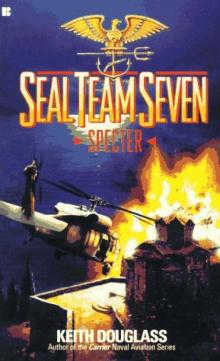 Seal Team Seven 02 - Spector
Seal Team Seven 02 - Spector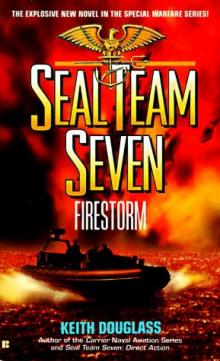 Seal Team Seven 5 - Firestorm
Seal Team Seven 5 - Firestorm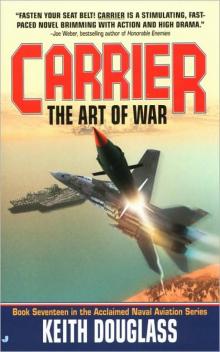 The Art of War c-17
The Art of War c-17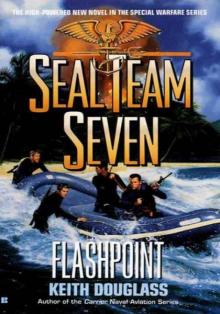 Flashpoint sts-11
Flashpoint sts-11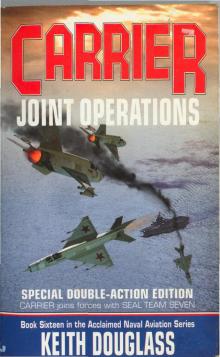 Carrier - Joint Operation Book 16
Carrier - Joint Operation Book 16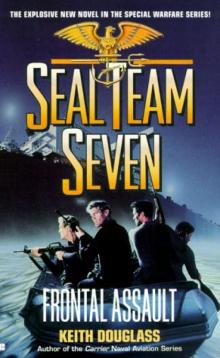 Frontal Assault sts-10
Frontal Assault sts-10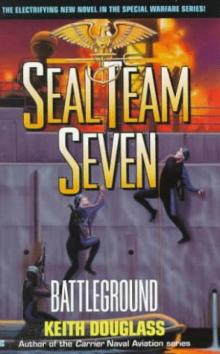 Battleground sts-6
Battleground sts-6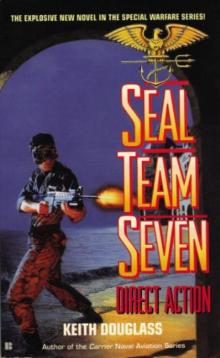 Direct Action sts-4
Direct Action sts-4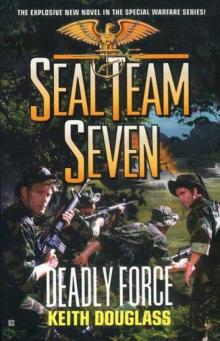 Deadly Force sts-18
Deadly Force sts-18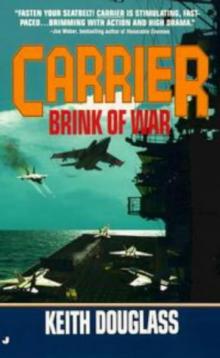 Carrier 13 - Brink of War
Carrier 13 - Brink of War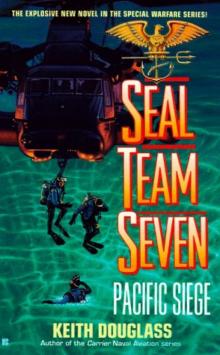 Pacific Siege sts-8
Pacific Siege sts-8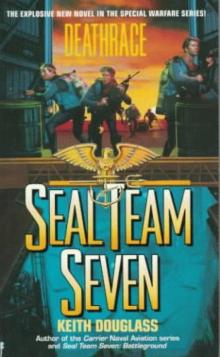 Deathrace sts-7
Deathrace sts-7